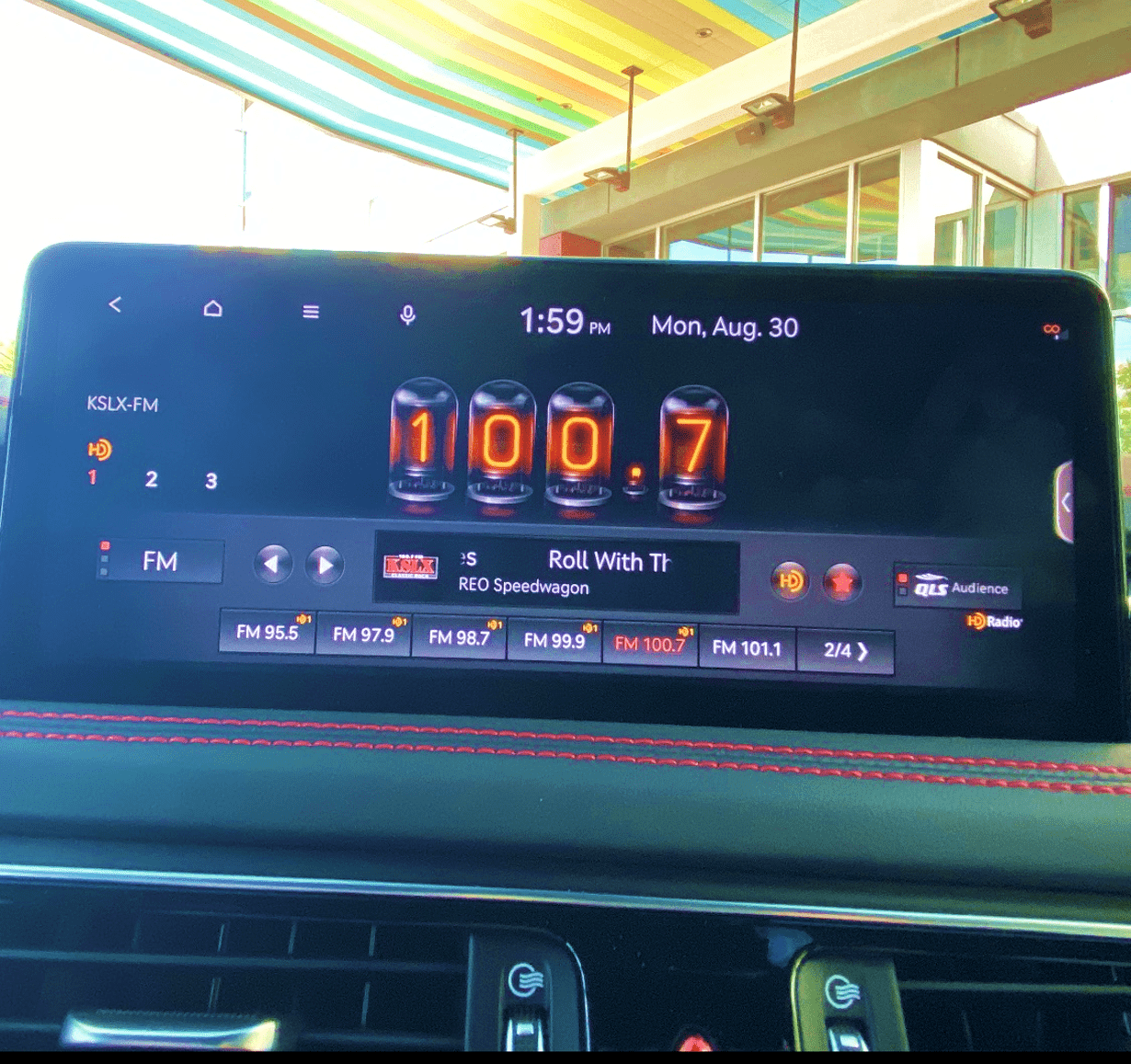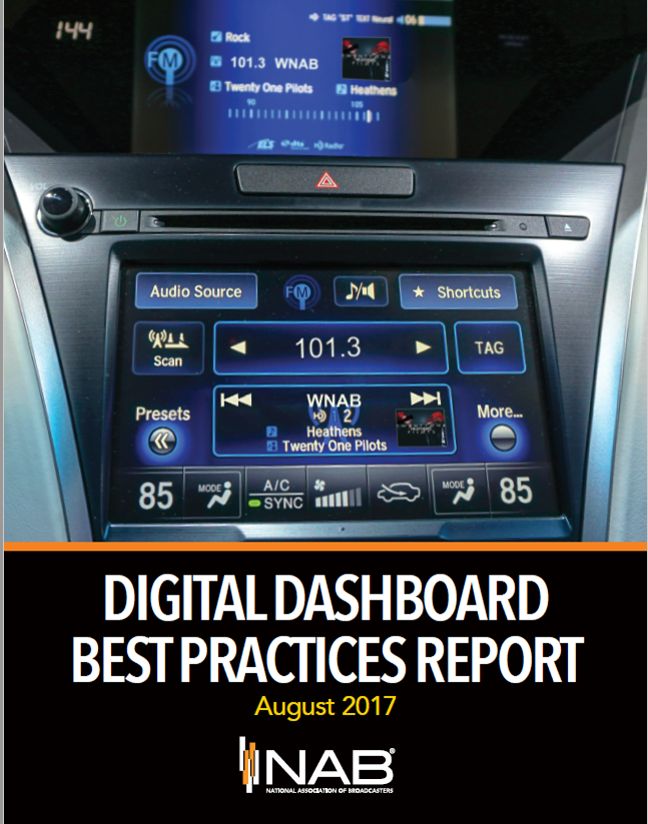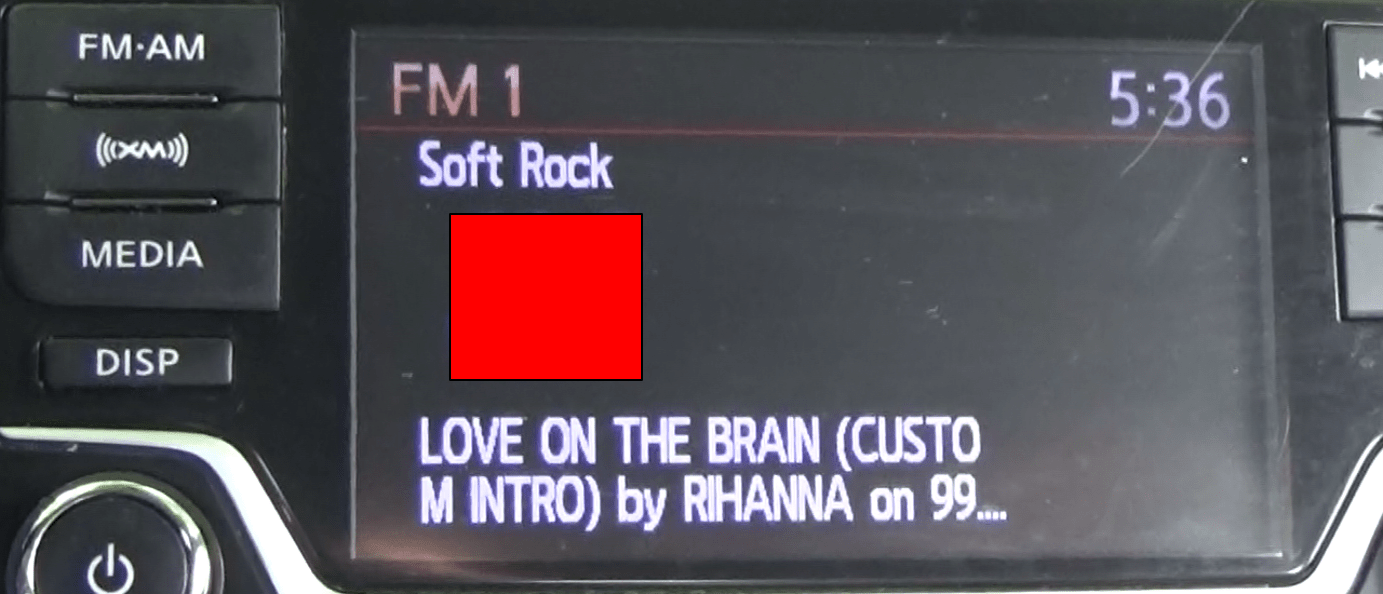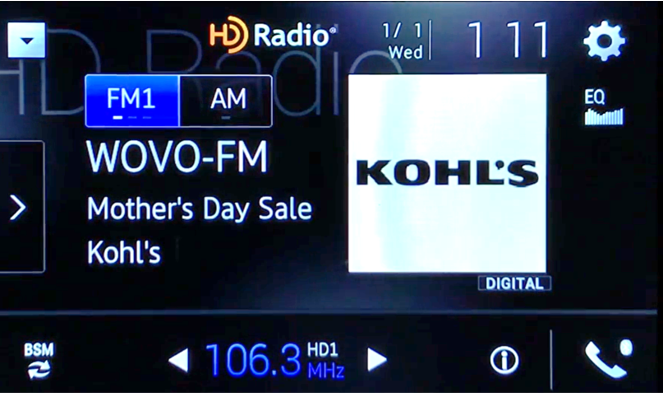As technology becomes an even more important factor in what determines a radio station’s success, we keep bumping into a new lexicon – terms and terminologies that all of a sudden become critical factors.
You may think of them as buzz words – engagement, user experience, monetization, data – but they all very much matter in the strategies and tactics stations – and their parent companies – employ in order to be competitive in the digital media world. As we’ve noted countless times in this blog, local radio stations may be licensed to communities – from Boston to Bismarck – but they now compete with everybody – music streaming services, satellite radio, podcasts.
And the confluence of all that audio is the car. In this pandemic, radio has learned what can happen when in-car listening is disrupted. Despite the anomaly that was 2020, radio’s future is inexorably tied to the auto industry in general, and dashboard technology specifically.
For years, automakers made minor tweaks to their dashboard arrays. That all changed during the 2000s when Ford developed their SYNC system, forever changing the way in which drivers – and passengers – access information and entertainment. Now, the changing, evolving dashboard has become a megatrend, a phrase coined by John Naisbitt back in the ’80s.
 And what’s weird about megatrends is they often move gradually, gaining momentum over a period of time. But then one day, you come to realize the change is all around you, and the effect is hard-hitting. Former Ford and Motorola exec, and now automotive trends consultant John Ellis refers to it this way:
And what’s weird about megatrends is they often move gradually, gaining momentum over a period of time. But then one day, you come to realize the change is all around you, and the effect is hard-hitting. Former Ford and Motorola exec, and now automotive trends consultant John Ellis refers to it this way:
“Megatrends happen slowly…until they don’t.”
And even with chip shortages, supply chain glitches, and a new car market that can only be described as erratic, the dashboard revolution isn’t just coming. It’s here.
So, let’s talk about those screens in cars that are becoming bigger, more powerful, and loaded with options and capabilities – whether car buyers want them or not. If anything, they are evolving, taking on the tastes and style of the vehicle itself. Check out this high-end Hyundai’s media center (pictured). All the radio frequencies (including SiriusXM channels) appear inside old school radio vacuum tubes.
whether car buyers want them or not. If anything, they are evolving, taking on the tastes and style of the vehicle itself. Check out this high-end Hyundai’s media center (pictured). All the radio frequencies (including SiriusXM channels) appear inside old school radio vacuum tubes.
Through the years, first with RDS, and later with HD radio, broadcasters’ abilities to control how they look in cars expanded. That was the good news. The challenge is that every auto manufacturer – or OEM – offered dashboard variations that made it challenging for content creators to provide a consistent look across the many makes and models across the industry.
The development of Apple CarPlay and Android Auto brought a higher degree of standardization to the dashboard, but at the same time, rendered radio to the background. That’s where apps become the difference-maker. Either your station’s mobile app is developed to show up in these popular interfaces, or you face simply not showing up on each tech company’s digital display.
By the way, both Apple and Google in-vehicle ecosystems will become more robust in the coming months, taking over even more functions in the car. This development was covered in another post – “What If Eric Rhoads Was Right?.” You can access it here.
But when drivers choose the “radio” – assuming they can still find it – how stations look in either RDS or HD radio formats becomes more important than many broadcasters think. Here’s the thing: when drivers switch from a playlist on Spotify to First Wave on SiriusXM to your station, appearances matter.
How does your station look on RDS and HD Radio? Is your method of designing artist, title, and album artwork consistent, accurate, and in-sync with the best stations in your market? Do you even know you can program your metadata?
I didn’t.
And I never gave it much thought until our two companies – Jacobs Media and jacapps – began our odyssey at CES and “connected cars.” Paul and I were schooled by some of the best – Ford’s Scott Burnell and the aforementioned John Ellis, Strategy Analytics’ Roger Lanctot, Connected Travel’s Bryan Biniak and John Moon, the NAB’s David Layer and Sam Matheny, and world-class engineer, Glynn Walden.
Radio stations have a tremendous amount of control over what appears on the screens of millions of cars and trucks. Problem is, they rarely do anything about it. If there was ever a radio content category that programmers, sellers, and managers simply left in the “set it and forget it” category, it’s in-dash messaging – better known as metadata.
As you know, I speak with programmers all the time about their content – over the air, via mobile, smart speakers, websites, social media, and the myriad other outlets where stations have some form of control over strategic and tactical output.
The one category that virtually no one speaks about is the dashboard. It’s almost as if this content was set up eons ago by the engineering department. And today, few understand the ramifications and potential available in those screens. Back in 2017 when he was with the NAB, Steve Newberry posited that broadcast radio’s patchwork quilt treatment of metadata in cars was creating a very inconsistent and even a troublesome situation for broadcasters. He theorized that as drivers switched from one audio source to another – including radio station A to radio station B, seeing inconsistent, error-filled metadata on screens could be erosive to listening specifically, and the image of the radio broadcasting industry in general.
Paul and I were assigned to conduct audits in three markets – Grand Rapids, Philadelphia, and Charlotte. We journeyed to each city, rented two cars – one with RDS and the other with HD radio (with Artist Experience) – and conducted multi-audits of each market’s FM stations, scanning and stopping from 88 to 108. We captured the experience on video, devised a scoring system, and published our results later that year.
and the other with HD radio (with Artist Experience) – and conducted multi-audits of each market’s FM stations, scanning and stopping from 88 to 108. We captured the experience on video, devised a scoring system, and published our results later that year.
We saw some smart treatments of music, and some that can only be described as abysmal. Some included misspellings of songs, incorrect artwork, and even notes in the metadata (“long version”) that weren’t meant for the driver to see.
The only conclusions we could reach is that these systems were set up years ago, perhaps by other owners, and simply have been ignored. We also concluded that few monitor their metadata because they simply don’t fathom its impact on the driving experience.
We also noticed music stations have an advantage. Most make an attempt to display accurate artist and title information. Some go the extra step by providing album artwork, rather than going on with the car’s default images (which are uniformly awful).
But spoken word stations and major programs often underutilize metadata. Most of the time, their stations serve up generic station IDs and slogans, rather than highlighting hosts, shows, guests, and other information that would be accretive to the driving experience.
After we completed these audits, and presented our findings to the NAB and its board, it was time to cull our thoughts, and make initial conclusions. The emphasis was leaving broadcasters with action steps that most could both afford and accomplish.
Glynn Walden wrote the report for the engineers, while we handled the programming side. The result is a document still available to everyone and anyone in radio, courtesy of the NAB.
It was recently updated, and remains a great starting point for understanding the issues and conditions, and developing a game plan for every radio company or any size in all markets. It’s available here.
At the NAB level, we spent much time in discussions about how radio might foster better relationships with the automotive community, from OEMs to local car dealers.
 And it became clear to us that everyone from the CEO at General Motors to the car salesman trying to make her October goal sees radio’s output on their car screens. If it’s inconsistent, at best, or substandard, at worst, what does this say about broadcasters?
And it became clear to us that everyone from the CEO at General Motors to the car salesman trying to make her October goal sees radio’s output on their car screens. If it’s inconsistent, at best, or substandard, at worst, what does this say about broadcasters?
And that bring us to today, and an event you might have interest in later this week. The aforementioned NAB Audit features logical conclusions we formulated from our audit about what makes for a good in-car metadata display.
But it was missing an important element – the input of drivers.
What do they see while on the road? What do they pay attention to? What confuses them? And what does the metadata suggest about radio, and the station they’re listening to?
Steve Newberry now heads up Quu, a company that is focused on in-dash messaging. His team markets the metadata, but needed confirmation about tactics, strategies, and those all-elusive “best practices.”
So, this time, we created a series of “radio experiences” – segments of a radio station that included variations on music presentation, commercials and stopsets, and station positioning and identification on the dash.
We had no agenda – our mission was to get a sense of how real drivers react to the metadata on their screens, especially as it pertains to advertising. What impact does text reinforce a commercial ad message? What about a logo for the sponsor (available in HD radio and marketed as “Advertiser Experience”), and the impact of continuous text for an advertiser that run through an entire stopset?
 Do respondents notice these commercial applications, does it impact their recall for an advertiser, and even better, do they retain a commercial’s message? Thanks to the Zoom platform, we were able to get a gauge on all these questions – and more – from 19 diverse drivers from six different U.S. markets.
Do respondents notice these commercial applications, does it impact their recall for an advertiser, and even better, do they retain a commercial’s message? Thanks to the Zoom platform, we were able to get a gauge on all these questions – and more – from 19 diverse drivers from six different U.S. markets.
The best part is seeing and hearing those all-important first impressions from respondents, and looking for repeat perceptions. It’s a small sample, by the methodology’s nature, but as you’ll see, very telling.
You can watch a 30 minute summary of the research, hosted by me on demand by visiting NAB Amplify. And then this Thursday at 2pm ET, bring your questions. Paul and I will be on hand for a live Q&A.
And hopefully, it doesn’t end here. From both of these projects, we’ve learned about the continuing importance of R&D for radio broadcasters, especially as we find ourselves in unfamiliar waters.
Now, I want to learn more about programming best practices. What are the optimal ways to display spoken word programming, talk shows, guest identification, and sports scores? Is this messaging accretive to the experience or is it an annoyance? Determining what’s optimal and what is a distraction is key to radio broadcasters using its agility to its advantage.
We have more work to do in the dashboard metadata space if we hope to hang onto radio’s advantage among drivers – and a growing opportunity, the passenger economy.
Metadata is radio’s advantage to lose, if we don’t make the right moves as an industry now.
Get the message?
You can access our 30-minute presentation, “Optimizing How Radio Is Displayed In Connected Cars,” and join Paul and me for live Q&A this Thursday, November 4 at 2pm ET. Click here for details.
- Baby, Please Don’t Go - November 22, 2024
- Why Radio Needs To Stop Chasing The Puck - November 21, 2024
- Great Radio – In The Niche Of Time? - November 20, 2024





Leave a Reply